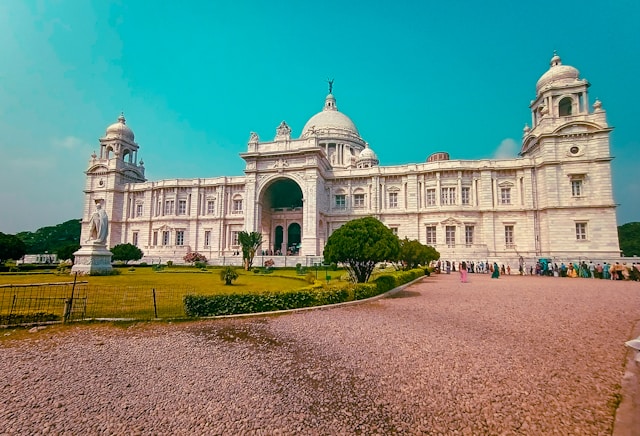May 18th is celebrated as International Museum Day all over the world. And we know that museums play an important role in understanding India’s rich cultural heritage and historical significance. They help preserve cultural and religious objects that have been used during wars, pre-independence, etc. These include sculptures, paintings, weapons, art and other materials from the prehistoric time.
Therefore, from ancient artefacts to modern art, these museums offer a fascinating glimpse into the country’s past and present. We have compiled a list of the top 10 museums in India that everyone must visit.
1. National Museum, New Delhi
The National Museum in New Delhi is one of India’s largest museums. Established in 1949, it houses a vast collection of artefacts covering over 5,000 years of Indian cultural heritage. Notable exhibits include the exquisite Harappan Gallery, showcasing artefacts from the Indus Valley Civilization, and the Buddhist Art section, featuring relics from various periods of Buddhist history. It also displays a remarkable collection of Central Asian antiquities, brought to India by Sir Aurel Stein.
2. Indian Museum, Kolkata
The Indian Museum in Kolkata, founded in 1814, is the oldest and largest museum in India and the Asia-Pacific region. It boasts an impressive array of artefacts, including ancient fossils, Mughal paintings, and rare antiques. One of its most famous exhibits is the Egyptian mummy, which attracts numerous visitors. It’s Archaeological section contains invaluable relics from the Maurya and Gupta periods, highlighting India’s rich historical tapestry.
3. Chhatrapati Shivaji Maharaj Vastu Sangrahalaya (CSMVS), Mumbai
Formerly known as the Prince of Wales Museum, CSMVS in Mumbai was established in 1922. It houses a diverse collection of artefacts from Indian history, including sculptures, textiles, decorative arts, and ancient manuscripts. The museum’s Natural History section is particularly popular with children, featuring a variety of stuffed animals and taxidermy specimens. Additionally, the museum’s collection of Indian miniature paintings and European artworks are of great significance.
4. Salar Jung Museum, Hyderabad
The Salar Jung Museum, inaugurated in 1951, is one of India’s three National Museums. It houses the extensive personal collection of Nawab Mir Yousuf Ali Khan Salar Jung III. The museum’s vast assemblage includes art objects from nearly every corner of the world, with notable pieces like the Veiled Rebecca, an exquisite marble statue, and the Musical Clock, which fascinates visitors with its hourly performances. The collection also includes rare manuscripts, ceramics, and textiles.
5. Government Museum, Chennai
Also known as the Madras Museum, the Government Museum in Chennai was established in 1851. It is particularly renowned for its impressive collection of South Indian bronzes, dating back to the Chola dynasty. The museum also houses an extensive archaeological section, featuring relics from various South Indian dynasties. Its Natural History section and the Children’s Museum are major attractions, offering a range of educational exhibits.
6. National Gallery of Modern Art (NGMA), New Delhi
The National Gallery of Modern Art (NGMA) in New Delhi was established in 1954 to promote modern and contemporary Indian art. The gallery houses an extensive collection of works by prominent Indian artists like Rabindranath Tagore, Raja Ravi Varma, and Amrita Sher-Gil. It also features sculptures, photographs, and new media installations. The NGMA regularly hosts temporary exhibitions, workshops, and art talks, fostering a vibrant cultural environment.
7. Albert Hall Museum, Jaipur
The Albert Hall Museum in Jaipur, inaugurated in 1887, is one of the oldest museums in Rajasthan. Designed by Sir Samuel Swinton Jacob, the museum showcases Indo-Saracenic architecture. Its collection includes a variety of artifacts such as miniature paintings, costumes, woodwork, and an impressive array of carpets. One of the museum’s most interesting exhibits is the Egyptian mummy, which draws considerable interest from visitors.
8. HAL Heritage Centre and Aerospace Museum, Bengaluru
The HAL Heritage Centre and Aerospace Museum in Bengaluru, established in 2001, is dedicated to the history and development of the aviation industry in India. The museum features a range of aircraft models, both military and civilian, along with engines and flight simulators. One of the highlights is the display of a full-scale model of the HAL Tejas, India’s indigenous light combat aircraft. The museum also offers a detailed look into the evolution of aerospace technology in India.
9. Calico Museum of Textiles, Ahmedabad
The Calico Museum of Textiles in Ahmedabad, founded in 1949 by industrialist Gautam Sarabhai and his sister Gira Sarabhai, is one of India’s premier textile museums. It showcases a comprehensive collection of Indian textiles, ranging from antique fabrics to contemporary designs. The museum’s exhibits include rare pieces of brocade, embroidery, tie-dye, and ikat. It is housed in a beautiful haveli, providing a picturesque setting for the rich textile displays.
10. Dr. Bhau Daji Lad Museum, Mumbai
Formerly known as the Victoria and Albert Museum, the Dr Bhau Daji Lad Museum is the oldest in Mumbai, established in 1855. It offers a fascinating glimpse into the city’s cultural heritage with its extensive collection of decorative arts, clay models, maps, and historical photographs. The museum underwent a significant renovation and reopened in 2008, providing a modern display environment while preserving its Victorian architecture. Notable exhibits include dioramas depicting life in 19th-century Mumbai and a remarkable collection of Indian pottery.
These museums don’t only attract tourism but also provide knowledge to people to understand the historical and cultural aspects. Therefore, whether you’re a history enthusiast, an art lover, or simply a tourist or citizen wanting to know about India’s history, these top 10 museums help offer a unique and memorable experience to all.





























